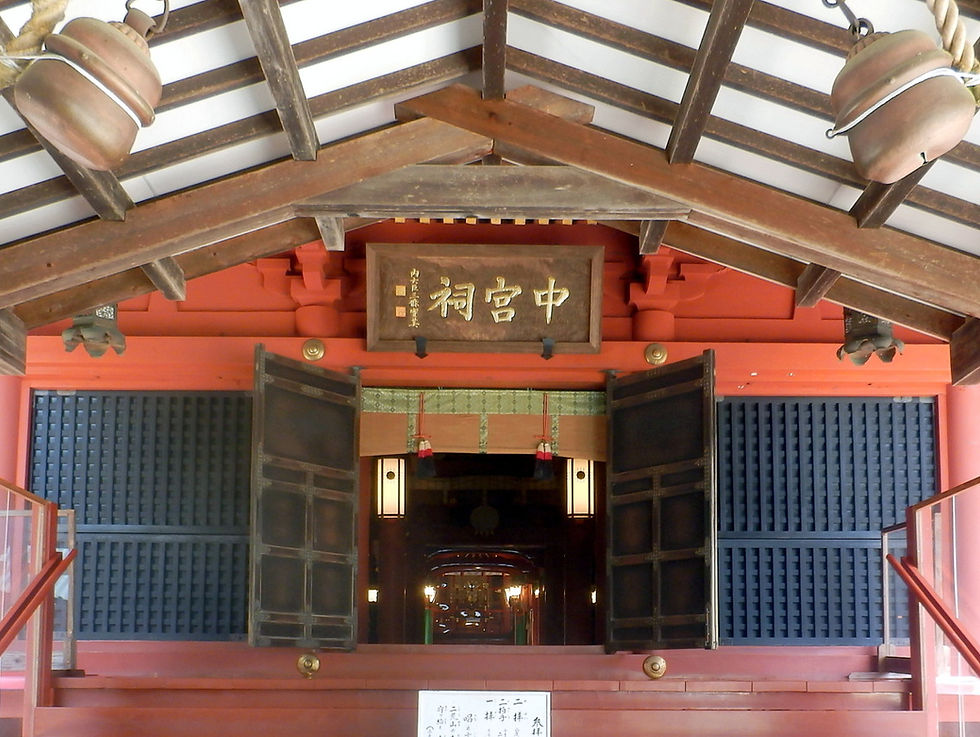Kasamori Kannon stands on the mountain in the tranquility
- Michi

- 2021年4月16日
- 読了時間: 3分
更新日:2021年7月7日

You'll get to Kannondo or the temple dedicated to Kannon (the Goddess of Mercy) after going up 110 stone steps in the forest filled with the trees of hundreds of years old. The surrounding mountains are designated as a natural park by the prefectural government.



On the way you see three huge cedars whose roots are connected.
And when you walk for a few more minutes, you see a camphor (kusunoki in Japanese) with a large hole in the trunk. This tree is so sacred that it's called 'KOSAZUKENOKUSU'. It is believed that the Kannon standing just across the tree will bless you with children.
It is said that Matsuo Basho(1644 ~1694) who was a haiku poet visited this temple in 1682. You can see a haiku (a Japanese poem) by him carved in a stone monument.
Niomon or Deva gate will welcome you, appreciating your tough climb to come here.
(Deva means 'God' in Sanskrit.)

You'll be impressed by the unique architecture on the rock called 'SHIHO KAKEZUKURI' or all four sides of the building upraised. It is significant to see so many stilts (actually 61 stilts in all) standing on the rock, while in Kyoto two sides of the Kiyomizu Temple is upraised with many stilts on the slope of the mountain.
The temple was designated as a National Important cultural property in 1950. And the natural forest of the mountain where the temple stands has been preserved as national natural monument.
It is said that Kasamori-Kannon Temple was founded by Saicho who is the founder of the Tendai Sect in 784. He enshrined an eleven-faced Kannon on the top of the mountain. The statue of the eleven-faced Kannon has been there since then.
It is said that In 1028 emperor Goichijo commanded to build the temple.
In 1958 it was demolished and rebuilt, when they found some Sumi written inscriptions that the present temple had originally been built between 1592 and 1595(Momoyama Era).
.
You'll have to go up 75 steep stairs to greet Kannon, don't forget taking your shoes off at the foot of the stairs. The Kannon statue is going to be unveiled between Oct.17 and Nov.18, for the first time in five years. (今年、2021年10月17日から11月18日まで御開帳となります)
Why don't you visit to greet the Kannon then? I definitely will.
Ando Hiroshige II(1826~1869) has visited here and depicted this unique architecture and compiled a deformation print.

source: brochure published by Kasamori Kannon Temple
A pair of the copper hanging lanterns with arabesque patterns, which are designated as a National Important Cultural Assets, are now stored in the National Museum at Ueno and Chiba Central Museum at Chiba city respectively.
Kasamori temple has been attracting not only pilgrims but also holidaymakers all year around, because it is number 31 of the 33 Bando(Kanto) Kannon Sacred Sites of the Kanto Pilgrimage.
As well you'll enjoy viewing cherry blossoms and autumn leaves.
You 'll be soothed by the peaceful harmony with the surrounding nature.
When it rains, it's closed.
It's located at 302 Kasamori Chonan-machi, Chosei-gun, Chiba 297-0125.
It takes 30 minutes by Kominato bus from JR Sotobou Line Mobara Station and 5 minutes walk from the Kasamori bus stop.
At Kazusa-Ushiku Station(Kominato Railway) take a Kominato Bus bound for Mobara Station and get off at Kasamori. It's a five-minute walk from the bus stop.
For further information: Kasamori Kannon home page







コメント